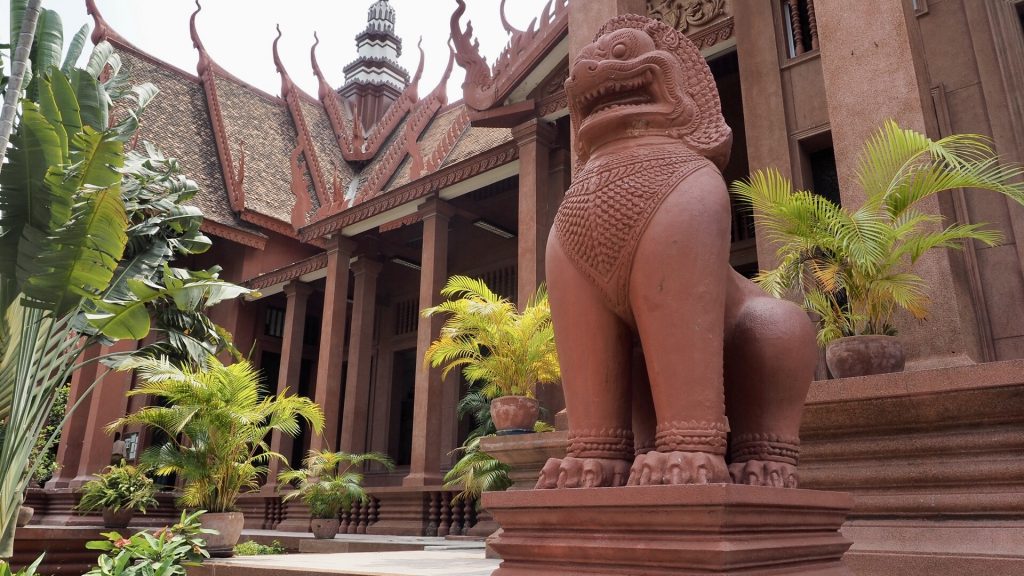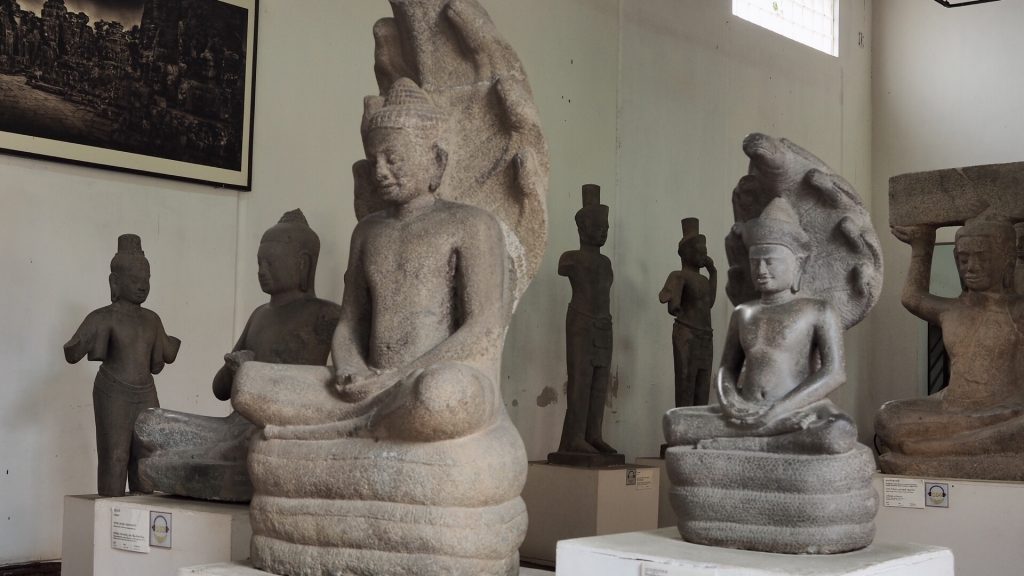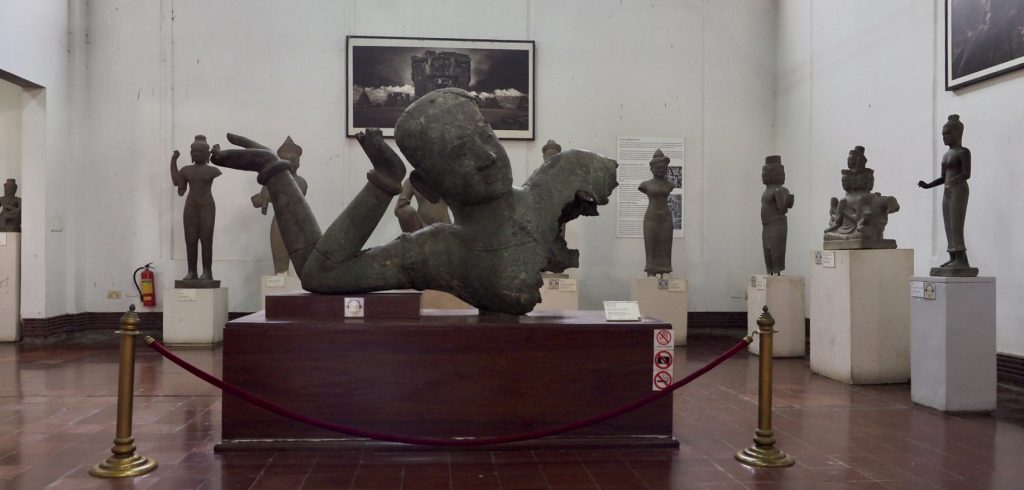It’s been a while since we were in Phnom Penh but I still wanted to write about it. Here we spend the last days together with my parents. We also still believed the whole Corona thing was going to blow over soon. We all know now, that’s not going to happen.
We had a little trouble finding a decent hotel in the Cambodian capital. They are surprisingly expensive for Cambodia and the standard is rather low. The one we found turned out to be worse than we had initially thought because Chris and I discovered bed bugs on our last morning. Luckily, we had treated our bags with a bug repellent and got away clean!
To get though Phnom Penh you always need to get a taxi or a tuk-tuk. We used Grab, the south-east Asian Uber. Usually there is always a tuk-tuk driver offering his service immediately after you step out of your hotel, a restaurant or even another tuk-tuk. But they always ask for a much higher price than Grab, or even the regular taxi app. And they will not meet that price even if you show it to them. The prices they asked were even higher than the prices for which our hotel booked a tuk-tuk for us for whole day. So, it appears that they still make too good business with the tourists.
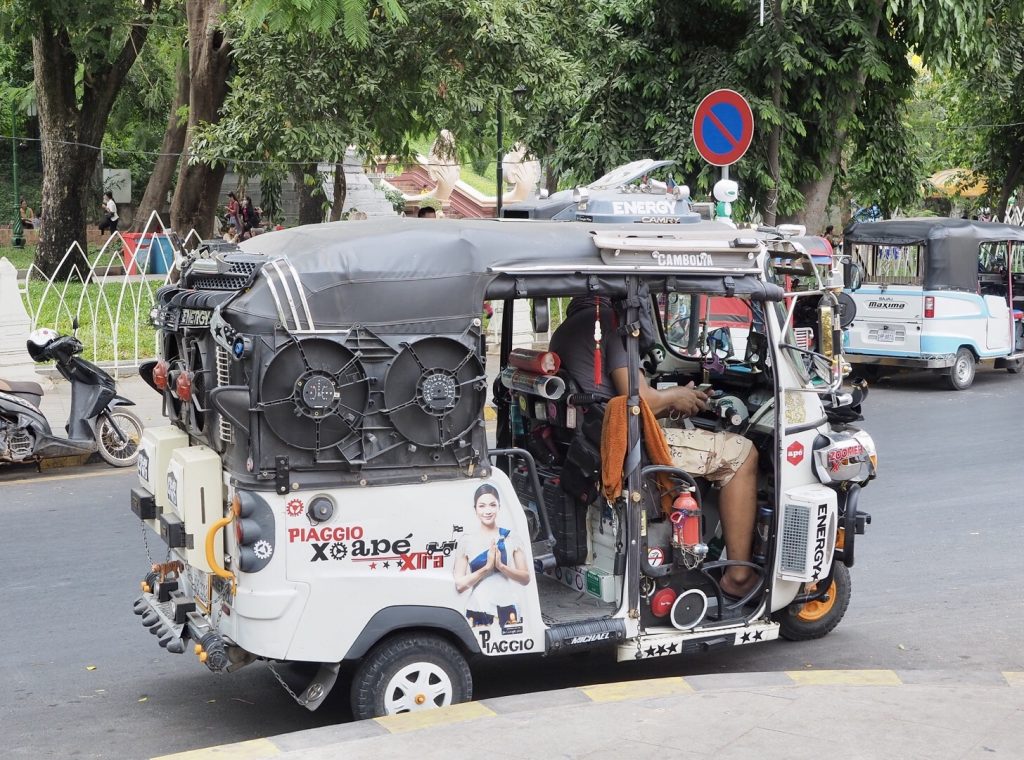
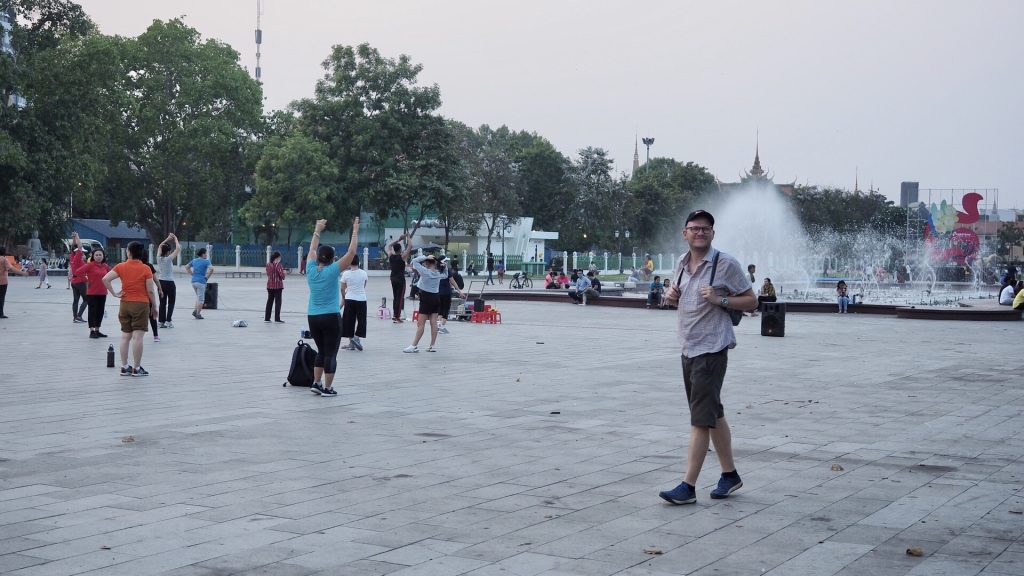
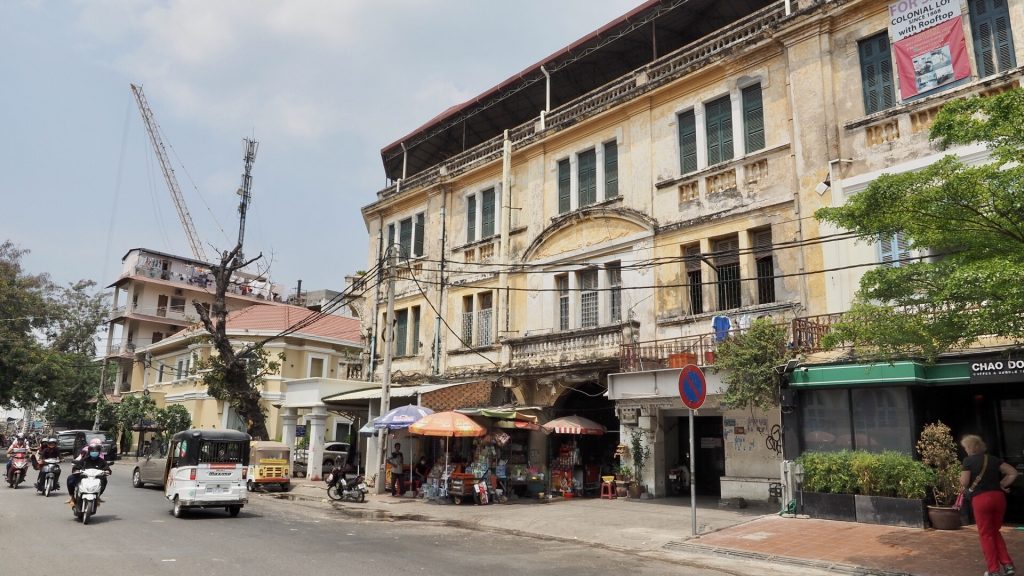
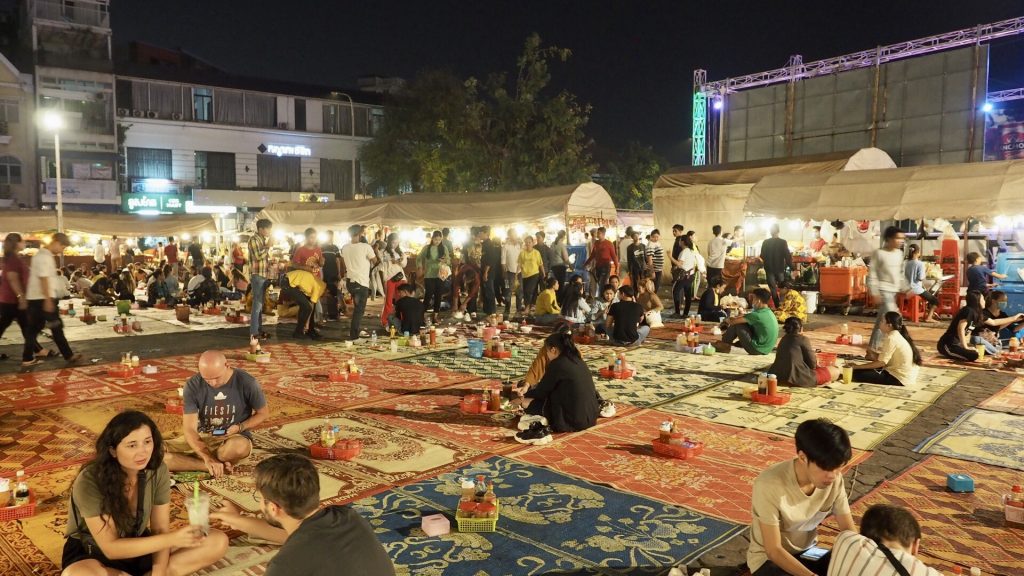
We wanted to start our sightseeing of Phnom Penh in the Royal Palace as soon as it opened in the morning to avoid the heat. But for an unknown reason it was closed. So, we changed our plan and went to the Killing Field Choeung Ek, about 15 km from Phnom Penh, and the prison S21. The name Killing Field is very descriptive, as here the prisoners were brought to be killed and buried in a mass grave. The center of this national memorial site is now a large pagoda where bones of the victims found there are put to rest. There is an excellent audio guide which tells you about the horrors that happened there. People where brought there to be killed. They used regular tools to save bullets. Children and babies were killed with their mothers watching, before the mothers were killed. Day and night loud music was played and the slogans of the Red Khmer were announced to keep up the morale of the perpetrators and to cover the sounds of the horrors happening at night. Up until today bones and cloths come up from the ground. The graves have only been partially been emptied and the bones still in the ground will remain there. In the central stupa those which were exhumed are laid out. They are marked with a color code indicating how they were killed. This experience is emotional and shocking for everyone with a tiny bit of empathy. For us it was especially incomprehensible that the German government appeared to ignore the crimes happening here and, after the Vietnamese defeated the Red Khmer, they still recognized them as the legal government of Cambodia. The Khmer even had a seat in the UN representing Cambodia.
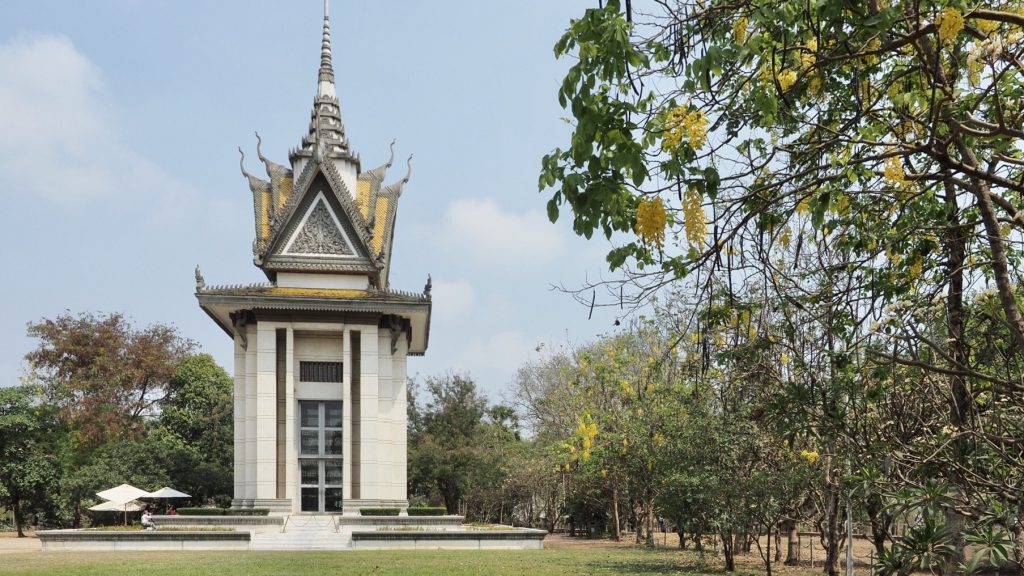
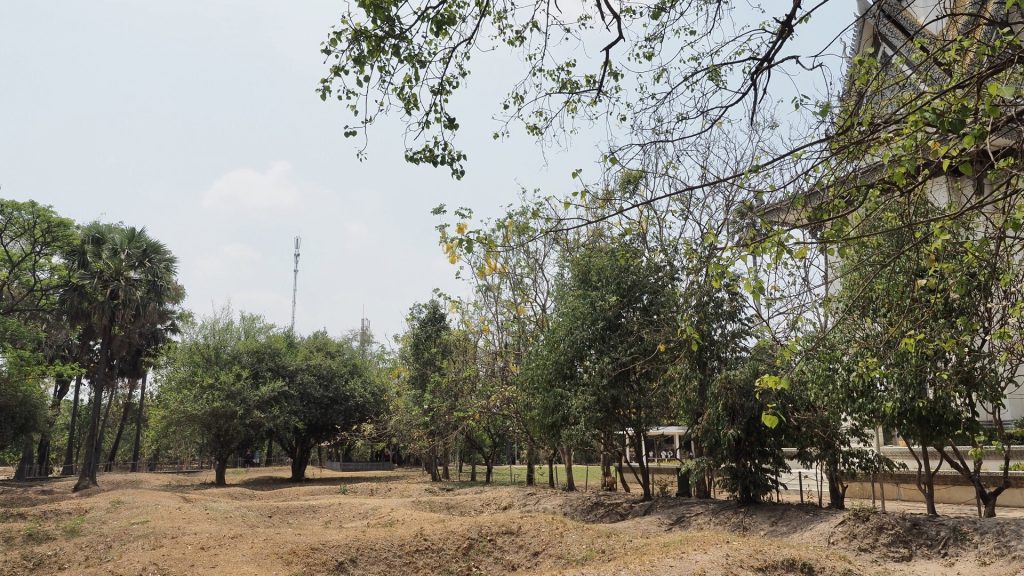
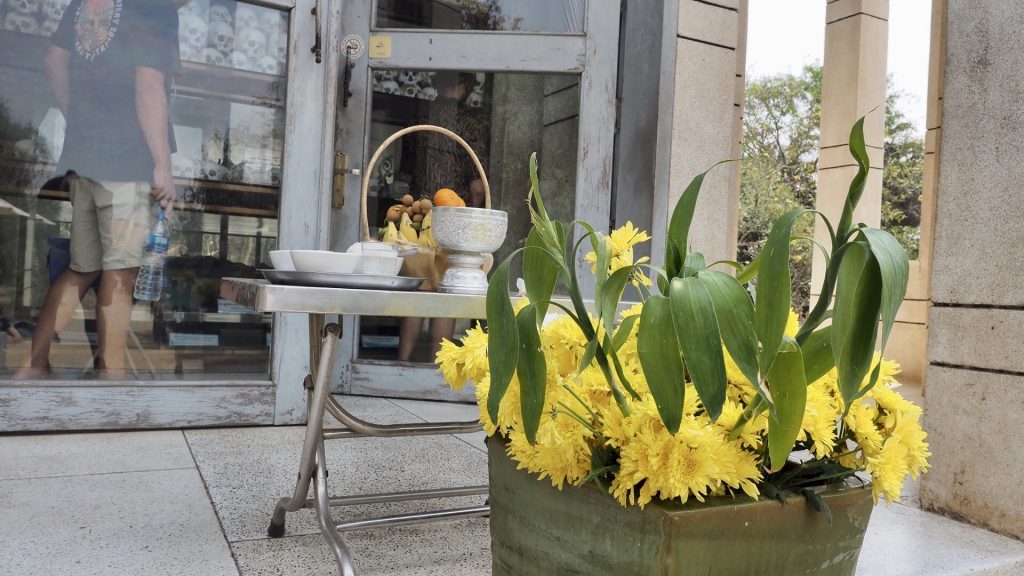
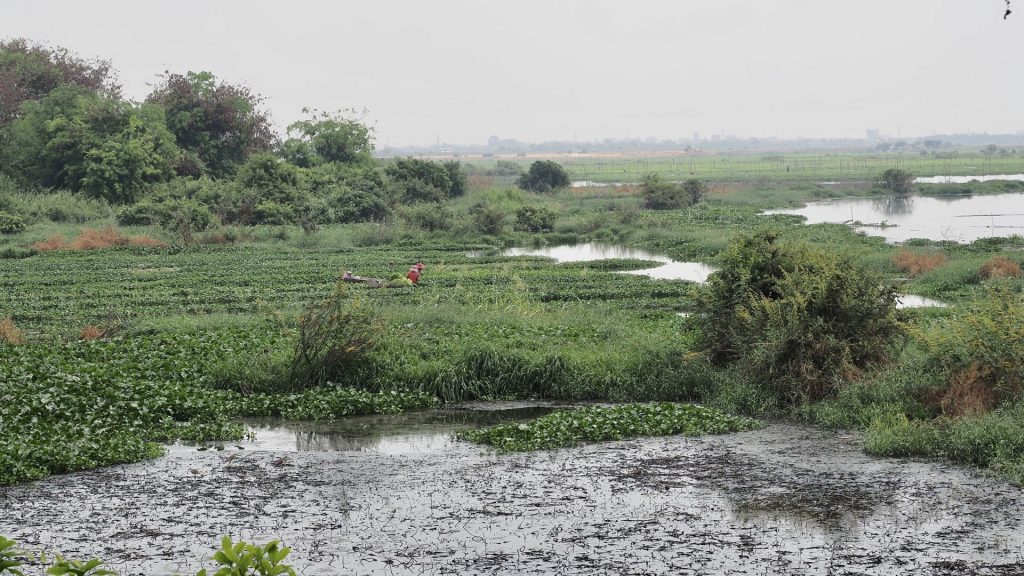
While the Killing Field is now a rather peaceful place, the ‘Security Prison 21’ (S-21) is also visually disturbing. Before the Red Khmer turned it into a prison and torture house it was a secondary school. With many of the Red Khmer having been teachers, this choice is even more distressing. The complex consists of several three-story buildings around two cortyards. In there the old swings and horizontal bars were used to torture people. There are pictures of the many prisoners, its estimated to be up to 20 000, that went through there. The pictures were taken when they arrived at S21. You look at their faces and think, ‘They are all dead, all violently killed and likely tortured’. There are pictures taken of the last prisoners, that were killed by the wardens, just before they fled from the arriving Vietnamese. You can see the cells, they are tiny. They did not even have a bed or a mat. It’s a horrible place that made me speechless and sad. I am hoping that something like this never happens again, and if it does, that we will not just stand there but act.
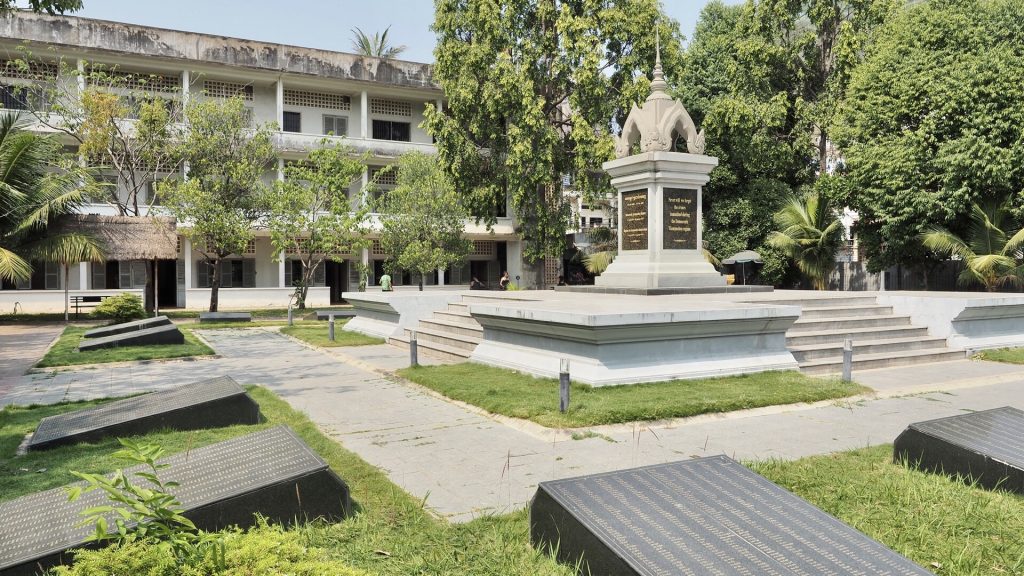
This day left us with much to think about and to discuss. But often we were left without answers, especially to the question, ‘What kind of a person can do something like this?’
The next day we went to see the Royal Palace first thing in the morning. I had a small dispute with the guards about the shorts I was wearing and why men were allowed in with shorts even shorter than mine. Women in a short dress or skirt are acceptable as well. Of cause, I lost that argument, but I still think if no one ever complains, nothing is ever going to change.
The palace itself is not of that much interest, but the Silver Pagoda and its surrounding temples and stupas are. The Silver Pagoda has its name from its floor which is covered with silver squares. Which are in turn mostly covered by carpet.
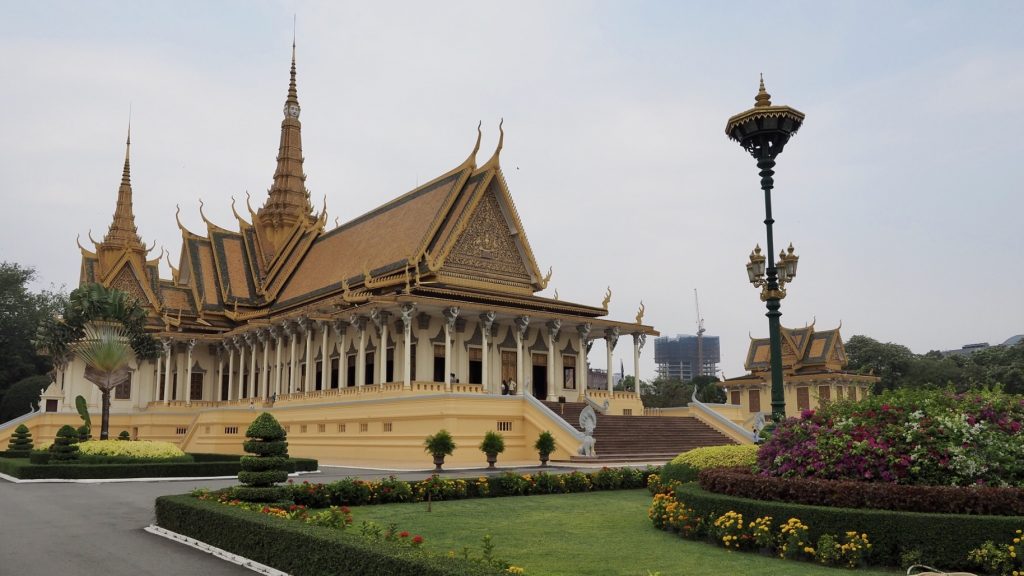
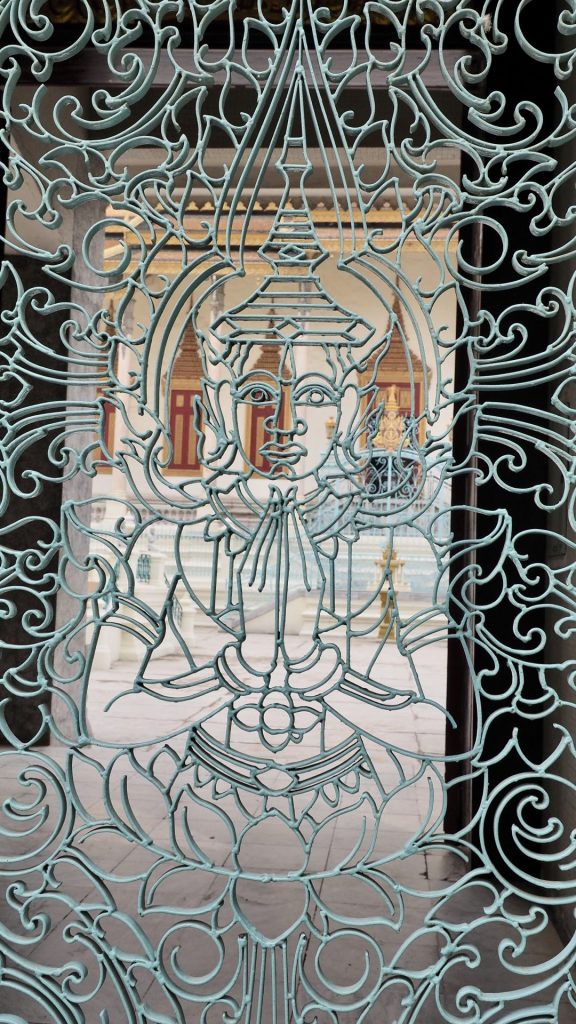
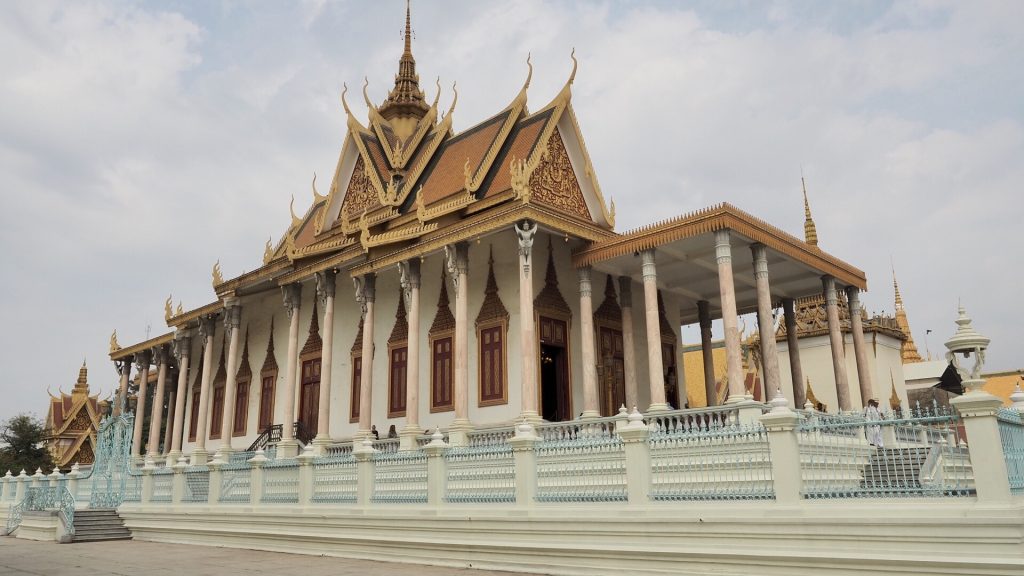
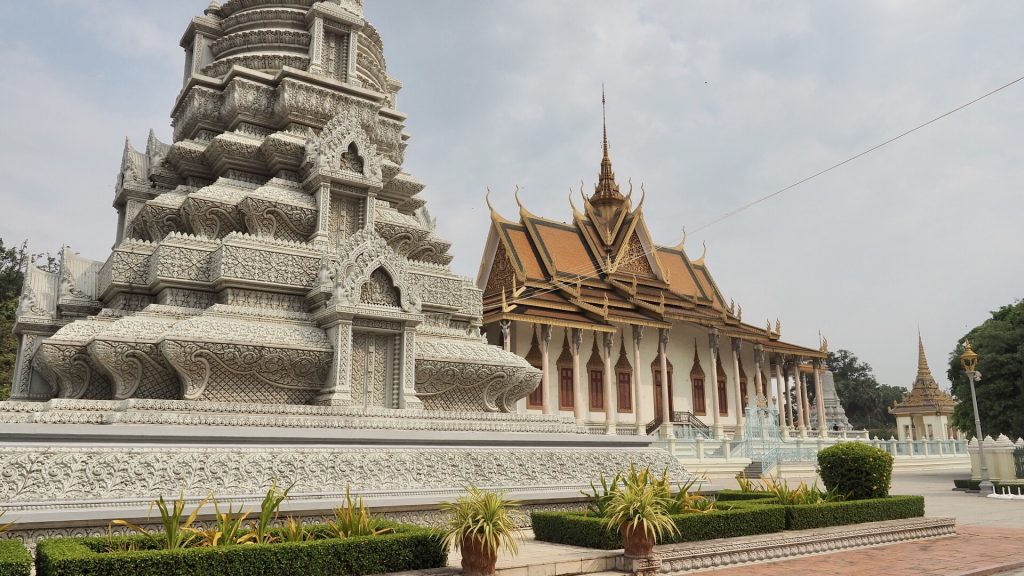

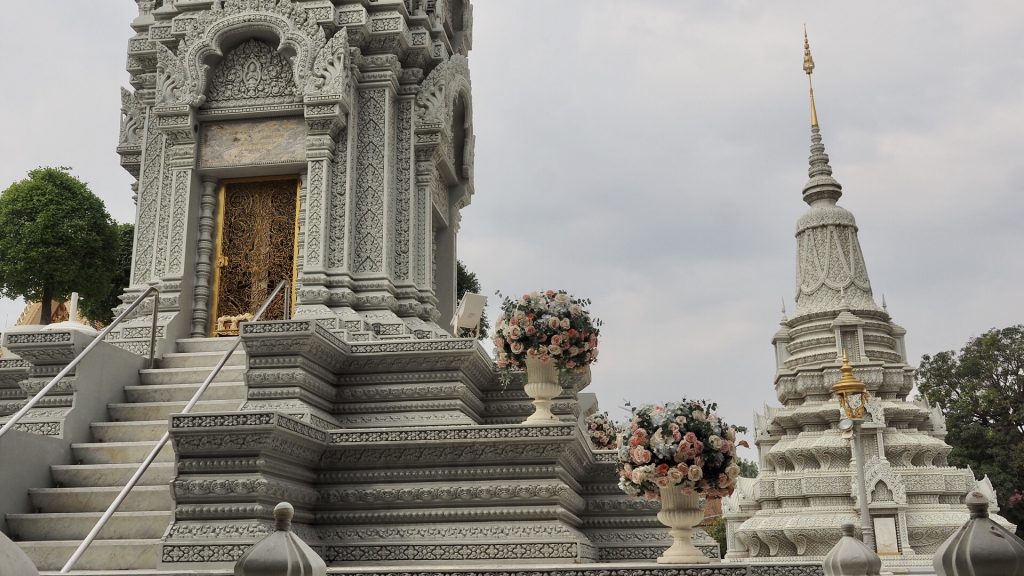
The day was especially humid and after our visit we had a break in our hotel before we went to the Wat Phnom. The temple is set on a small hill with many trees. Here you could feel how much of a difference trees make in a hot climate. Legend has it that Wat Phnom was built by the widow Daun Chi Penh which subsequently lead to the foundation of the city Phnom Penh. At Wat Phnom there is a shrine to honor the widow.
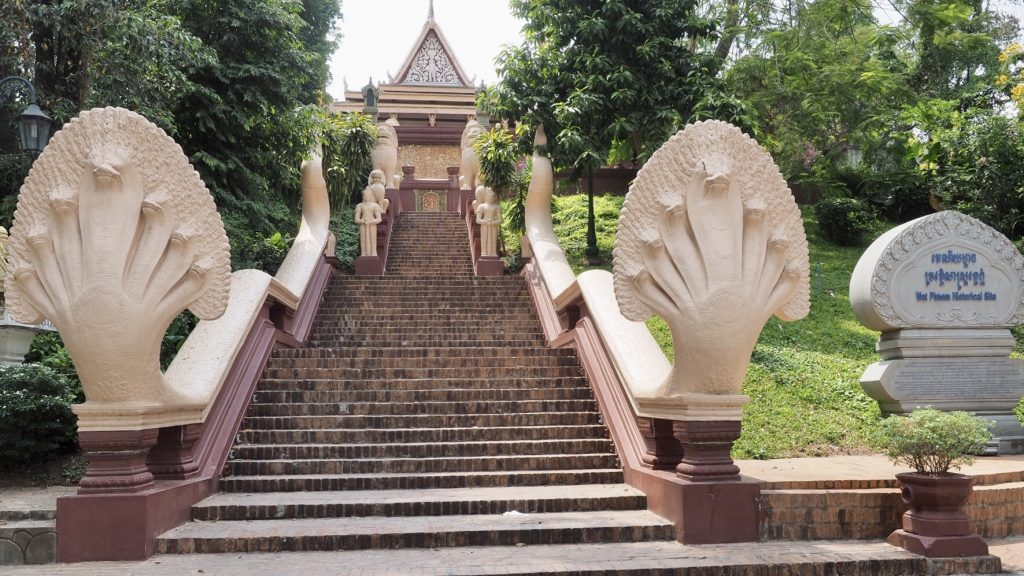
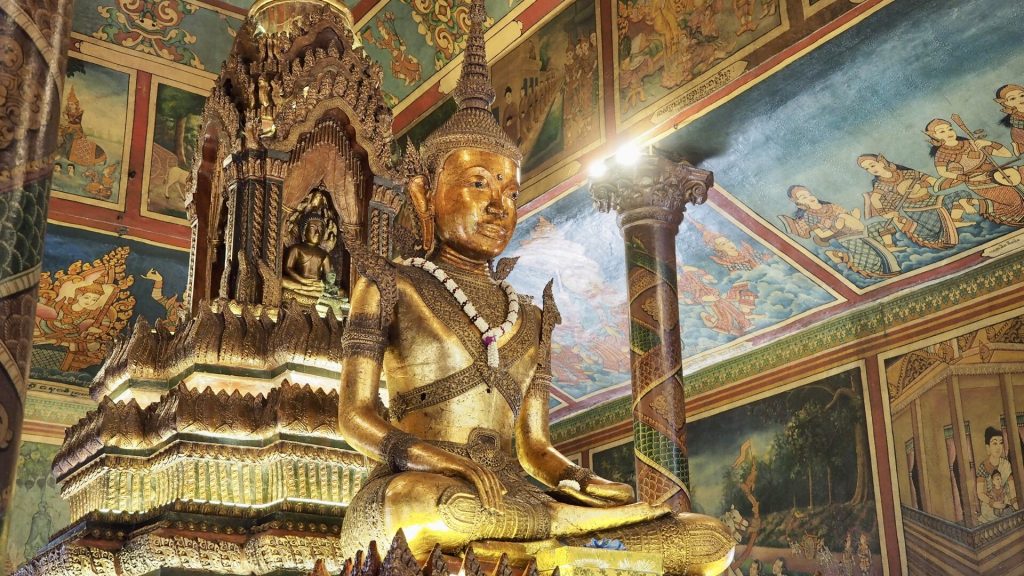
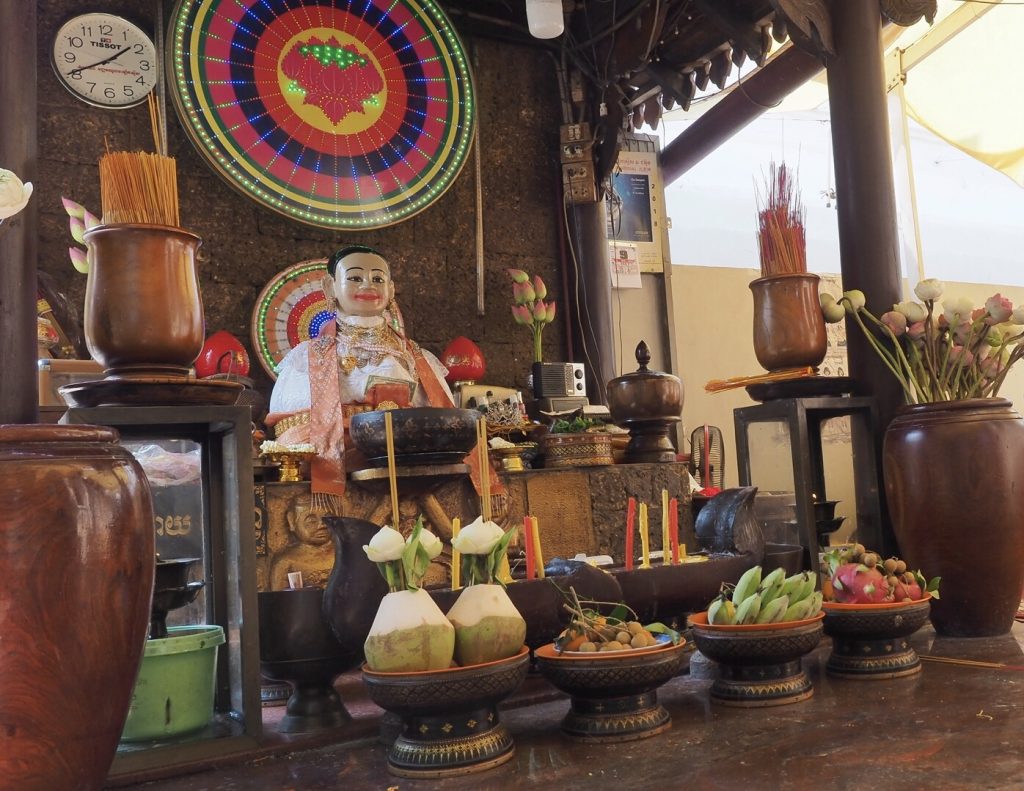
That evening we went to a rooftop bar on one of the few skyscrapers in Phnom Penh. We wanted to celebrate out last night in Phnom Penh. The drinks were good and the view amazing. Little did we know of the confusion, frustration and sadness that came over us in the next days.
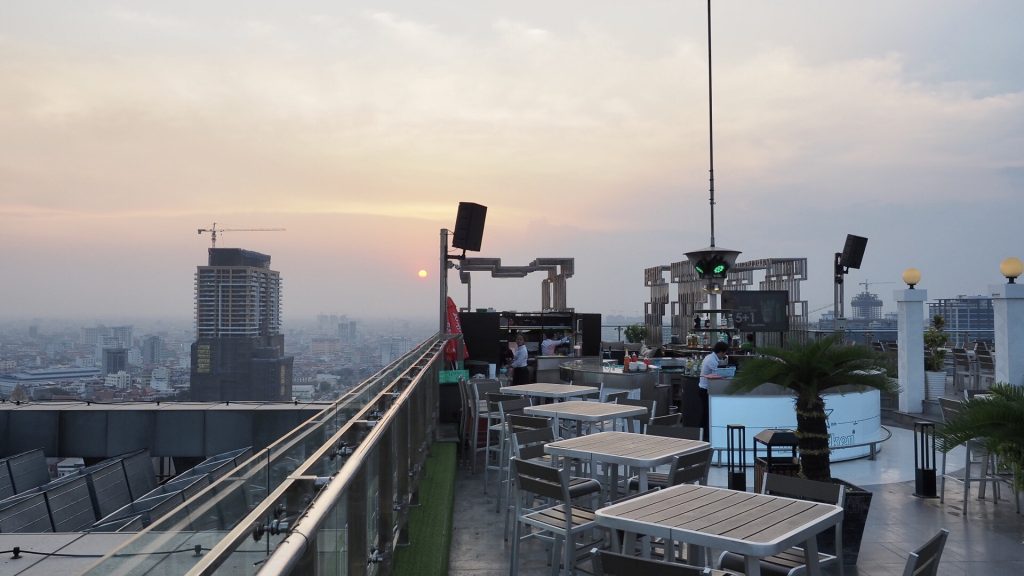
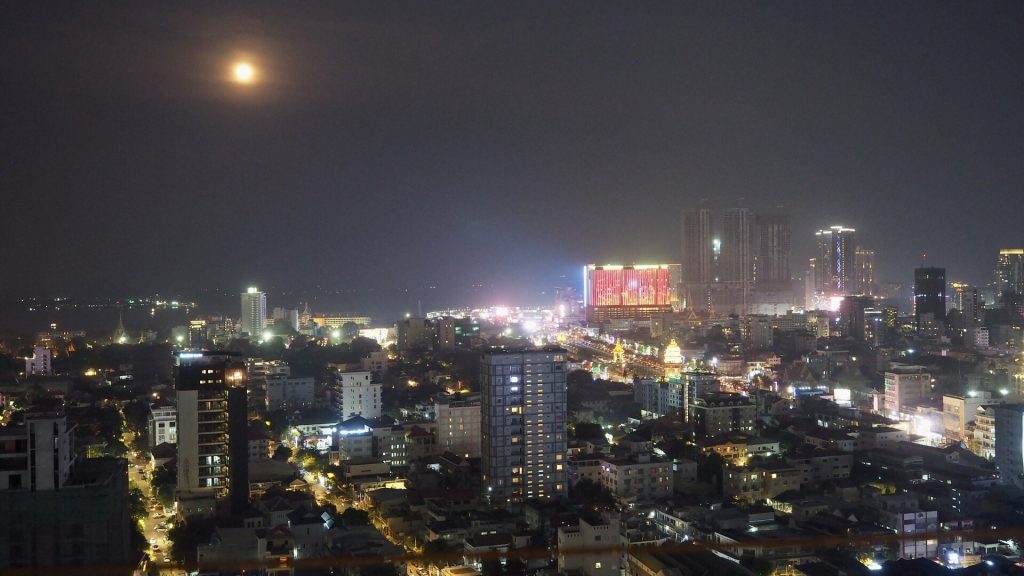
As I already wrote, we ended up not going to Ho-Chi-Min but stayed in Phnom Penh. Much of our time we spent at the hotel pool and discussing and planning. We went to the National Museum where many of the original sculptures from Angkor are displayed. The museum is rather pricy and does not offer a lot of explanations. So, if you find yourself with too much time in Phnom Penh it’s an interesting thing to see, but you won’t miss much if you don’t.
